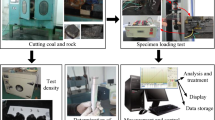Abstract
In order to improve the proficiency and response ability of emergency command and rescue personnel at all levels on emergency responsibilities and processes, and reduce casualties and property losses caused by emergencies, a ParaViewWeb architecture method of power security emergency drill platform based on VR technology is proposed to improve the actual completion of the drill. Using the scalability of ParaViewWeb architecture, a power security emergency drill platform based on VR technology is built. In the platform, the self-learning algorithm for power safety emergency drills based on big data and deep learning is used to manage power data. Based on the processed data, three-dimensional scenes, mathematical models and pre-plan reasoning are established through VR technology, and gesture recognition algorithms are used to realize man–machine interaction; according to the 3D drill scenario based on VR technology, the message distribution mechanism, emergency drill mechanism and drill execution mechanism in the emergency drill platform is built to complete the power security emergency drill. The experimental results show that this method has high accuracy in character gesture recognition, can increase the purpose of message transmission, reduce the overhead waste and unnecessary transmission hopes of information transmission, and save the time of message transmission; the actual completion of the drill is very close to the expected completion, and the integrity of the emergency drill is high.








Similar content being viewed by others
References
Ajibodu FA, Adaramola OJ (2020) Reducing fault response time of power supply distributionin developing nation. Am J Eng Res 9(5):106–111
Akulichev VO, Grabchak EP, Mishcheryakov SV, Talalaev AA (2021) Digital technologies for managing anthropogenic risks in electric power industry. Saf Reliab Power Ind 13(4):248–256
Baker, S., Wa Yc Ott, J., Robertson, E., Carrasco, R., Neves, B.B., & Hampson, R. (2020). Evaluating the use of interactive virtual reality technology with older adults living in residential aged care. Information Processing & Management. 57(3):102105.1–102105.13.
Bazyar J, Farrokhi M, Salari A, Khankeh HR (2020) The principles of triage in emergencies and disasters: a systematic review. Prehospital and Disaster medicine: the official journal of the National Association of EMS Physicians and the World Association for Emergency and Disaster Medicine in association with the Acute Care Foundation 35(3):1–9
Burlo VV, Polyukhovich M, Manko VV, Logvinova Y (2021) Development of safety management technology of electric power networks in order to sustainable development. E3S Web Conf 274(2):10004
Chen K, Franko K, Sang R. (2021) Structured Model Pruning of Convolutional Networks on Tensor Processing Units
Flavián C, Ibáez-Sánchez S, Orús C (2019) The impact of virtual, augmented and mixed reality technologies on the customer experience. J Bus Res 100:547–560
Jian C, Xiang X, Zhang M (2019) Mobile terminal gesture recognition based on improved fast corner detection. IET Image Proc 13(6):991–997
Kondratiuk SS (2019) Ukrainian dactyl alphabet gesture recognition using cross platform software and convolutional neural networks. Artif Intell 24(3–4):107–113
Lee J, Anjos E, Satti SR (2020) Sjson: a succinct representation for json references. Inf Syst 97(3):101686
Liu Y, Tang S, Gao Y, Li Z, Li H (2019) Label distribution learning for video summarization. Jisuanji Fuzhu Sheji Yu Tuxingxue Xuebao/Journal of Comput-Aided Des Comput Graphics 31(1):104
Mai W, Fang L, Chen Z, Wang X, He W (2020) Application of the somatosensory interaction technology combined with virtual reality technology on upper limbs function in cerebrovascular disease patients. J Biomed Sc Eng 13(5):66–73
Pavlič J, Tomažič T, Kožuh I. (2021) The impact of emerging technology influences product placement effectiveness: a scoping study from interactive marketing perspective. Journal of research in interactive marketing. Article publication date: 23 November 2021. https://doi.org/10.1108/JRIM-02-2021-0041.
Pavlič J, Tomažič T, Kožuh I (2021) The impact of emerging technology influences product placement effectiveness: a scoping study from interactive marketing perspective. Journal of research in interactive marketing 16(4):551–568. https://doi.org/10.1108/JRIM-02-2021-0041
Polyukhovich M, Burlov V, Mankov V, Bekbayev A (2019) Electric power supply management of the construction site in the interests of facilitating electrical safety. E3S Web of Conf 140(1):08006
Shalkevich LV (2020) Effectiveness of virtual reality technology use in complex rehabilitation of manual activity in children with cerebral palsy. J Grodno State Medical University 18(6):716–721
Silva J, Ribeiro C, Lopes JC (2019) Ranking dublin core descriptor lists from user interactions: a case study with dublin core terms using the dendro platform. Int J Digit Libr 20(2):185–204
Weng Y, Mohammadpourfard M, Tajdinian M (2019) Benchmark of machine learning algorithms on capturing future distribution network anomalies. IET Generation, Transmission & Distribution 13(8):1441–1455
Yang Z, Han P, Zhou F (2019) Rapid Prediction of Electric Energy Consumption in Regional Buildings under Big Data Environment. Comput Simulation 036(004):432–435
Yim YC, Park SY (2019) “i am not satisfied with my body, so i like augmented reality (ar)” consumer responses to ar-based product presentations. J Bus Res 100:581–589
Zhang SH, Zhang SK, Liang Y, Hall P (2019) A survey of 3d indoor scene synthesis. J Comput Sci Technol 34(3):594–608
Zhou ZH (2019) Abductive learning: towards bridging machine learning and logical reasoning. Sci Chin (Information Sciences) 62(07):220–222
Zhu S, Ouyang J, Zeng X, Zhong X, He Y (2019) Methodology of Non-scripted Emergency Drills for Network and Information Systems. Hunan Electric Power 39(4):5–8
Author information
Authors and Affiliations
Corresponding author
Ethics declarations
Conflicts of interests
The corresponding author states that there is no conflict of interest.
Additional information
Publisher's note
Springer Nature remains neutral with regard to jurisdictional claims in published maps and institutional affiliations.
Rights and permissions
Springer Nature or its licensor (e.g. a society or other partner) holds exclusive rights to this article under a publishing agreement with the author(s) or other rightsholder(s); author self-archiving of the accepted manuscript version of this article is solely governed by the terms of such publishing agreement and applicable law.
About this article
Cite this article
Zhang, S. ParaViewWeb architecture method of power security emergency drill platform based on VR technology. Multimed Tools Appl 83, 6447–6467 (2024). https://doi.org/10.1007/s11042-023-15934-5
Received:
Revised:
Accepted:
Published:
Issue Date:
DOI: https://doi.org/10.1007/s11042-023-15934-5




